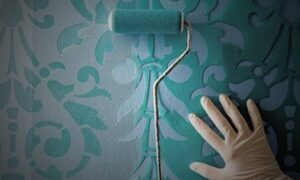These tips will help you achieve the best results, no matter if you are a beginner or an expert. Learn the most important things before you paint your walls. Look out for the best Painters Brisbane.
White clothing helps to hide paint splatter
White is the smartest option, regardless of whether you are painting a residential or commercial building. It will not only hide paint splatter but also make you appear more professional.
White clothing has been around since antiquity. Roman brides were the first to wear white wedding gowns over 2,000 years ago. Although it isn’t a popular color today, it was once the most preferred color for houses.
Painting is a grueling and sweaty profession, and wearing white is a smart way to stay cool. In addition, the color helps blend with other colors.
The color white has long been associated with cleanliness, simplicity, and purity. It is also associated to religious ceremonies. White is a great marketing tool that helps clients to paint their homes.
A necktie can also be used to hide stains. A piece of cardboard can be used to stop the stain from leaking onto your fabric.
There are many other ways to clean your shirt. You can wash it in the machine, or use a laundry detergent or dish detergent. Depending on what type of stain you have, you can use a hairspray/nail polish remover.
Bleach is one way to get rid of stains. However, bleach can damage your fabric, so be sure to use it sparingly. The stain can be washed in warm water.
It is easier to remove masking tape than painter’s tape
When you are painting, you might be wondering if it is better to use painters tape than masking tape. There are a few key differences between these two tapes. Both are great for sealing surfaces and preventing them from being painted, but they have different properties. Painter’s tape is designed for outdoor use, while masking tape is meant for indoor applications.
Masking tape can be used to adhere to different surfaces. It usually has three layers. The bottom layer is made of a crepe-paper backing. This makes it easy for you to tear the tape by yourself. The adhesive on the top layer is a natural rubber. It is also pressure sensitive. The adhesive leaves residue when the tape is ripped off.
The adhesive on masking tape is very sticky, and can leave residue on the surface when it is removed. It is important to remove the tape immediately after painting. If left on the surface for too long, it can cause damage to the paint job or wall.
Some masking tapes are coated with crepe paper backing. This makes them easier to cut by hand. It makes it easier to write on the tape. This backing makes it easy for you to draw a clean line.
Masking tape is a popular method of sealing surfaces before painting. It is also used in many other applications. These include labels, laboratory equipment, and food.
Water miscible oil paintings are not susceptible to cracking or discoloration
There are many factors that affect whether an oil paint will degrade with solvent or swell with solvent. The polymeric structure of the solvent binding medium is one of the most important. This will determine the paint’s swelling ability in organic solvents. Paints with high oil concentrations will expand more.
This is because solvent must be incorporated into polymer. If the polymer is not swollen, the solvent will diffuse outwards and settle on the surface. If the paint is too swollen, the solvent can diffuse into the bulk of paint.

Polymer-solvent interactions are often complex and involve diffusion and retention. Diffusion is very slow when there is water. The concentration of oil or pigment affects the rate of diffusion. However, diffusion is only possible in an intact polymer network. Convective transport is also possible, but at rates many orders of magnitude greater than diffusion.
Solvent exposure can enhance a variety of physicochemical reactions. Two of the more studied are the formation of metal soaps and hydrolysis of the TAGs of the oil binder. Both of these processes occur together with diffusion. The former has been the most studied.
There are many theories about diffusion. One simple theory of diffusion states that solvents diffuse proportionally to the paint’s concentration.
Western cultures have rich traditions of cave paintings
Using high-tech tools, scientists have discovered that prehistoric paintings reveal a lot about the culture that made them. Some of the tools used by archaeologists include carbon dating and 3D laser modeling.
Carbon dating provides an accurate date for an artwork’s age. Reliable carbon dating requires knowing the half-life value of nitrogen-14. The half-life for nitrogen-14 is approximately 5,730 Years. This means that organic material must be replenished every 5,730 years.
The carbon dating technique is especially useful for cave art research. Carbon dating gives an accurate date for the age and type of the organic material in the artwork. It also gives an absolute age of the art.
The female pubic triangle was one of the first images to be carved. It is instantly recognisable and represents a breakthrough in the enhancement of likeness. It has been dated to approximately 32 000 to 34 000 BP.
Vogelherd horses are another example of figurative artwork. These are usually stone flutes and measure about 10 cm high. They were made to be held in one’s hand. They’re painted in groups, and are usually depicted in early autumn.
Another animal to be represented in cave art is the rhinoceros. It’s been painted on a cleft in the wall, and seems to have been painted with strong conviction. It may be a representation for a shaman rhinoceros which would tempt spirits.
Ink and color ink painting share equally rich and complex traditions in East Asia.
Among the myriad Chinese arts and sciences, ink and color ink painting have equally rich and complex traditions. Here is a brief overview of the major three.
The quality of ink or color ink painting can be very variable because it is a one-off task. Although the quality of workmanship may not be in the same league as the genii of the Gongfu, the baffling process of obtaining the desired effect is a worthy endeavor in its own right. These merits are enough to make it worthwhile to reexamine the merits associated with the aforementioned medium. As for the aforementioned medium of expression, it is best to focus on the aforementioned merits and leave the rest to the experts. It would be a shame not to pay attention to the merits mentioned above, as you might be left behind.
Next up in the Chinese arts, sciences and arts is the production quality paintings. The large-scale murals by the Tang Dynasty make a great addition to the artifact collection, even though they may not have been made. It is important to differentiate between the simpler works of art and the more elaborate works of art.
Techniques for getting a clean edge around your ceiling without taping
Tape is one way to cover your light fixtures. The more esoteric task of masking off your ceiling in question requires a bit more finesse. A plastic cup is a better choice than a gallon paint. If you’re lucky you might be able to tape the room the same day that you finish painting. It is also a good idea to keep a damp rag at the ready to clean up any mess you may make while you’re at it.
The aforementioned ol’ fashioned taping off your ceiling is a time sink, so if you aren’t up for the task, there is a more user friendly solution to the problem. If you don’t feel like taking on this project, you could paint over the top layer, then sanding off and buffing the rest. You can also use a wide painter’s tape to mask off the ceiling, which is an all in one job.
The true cost of this project is much less than you’d pay to get a professional to do it. You’ll be able to maintain a smooth ceiling for many more years if you find a way to do it yourself. The most important part is a willingness and ability to try new things.
